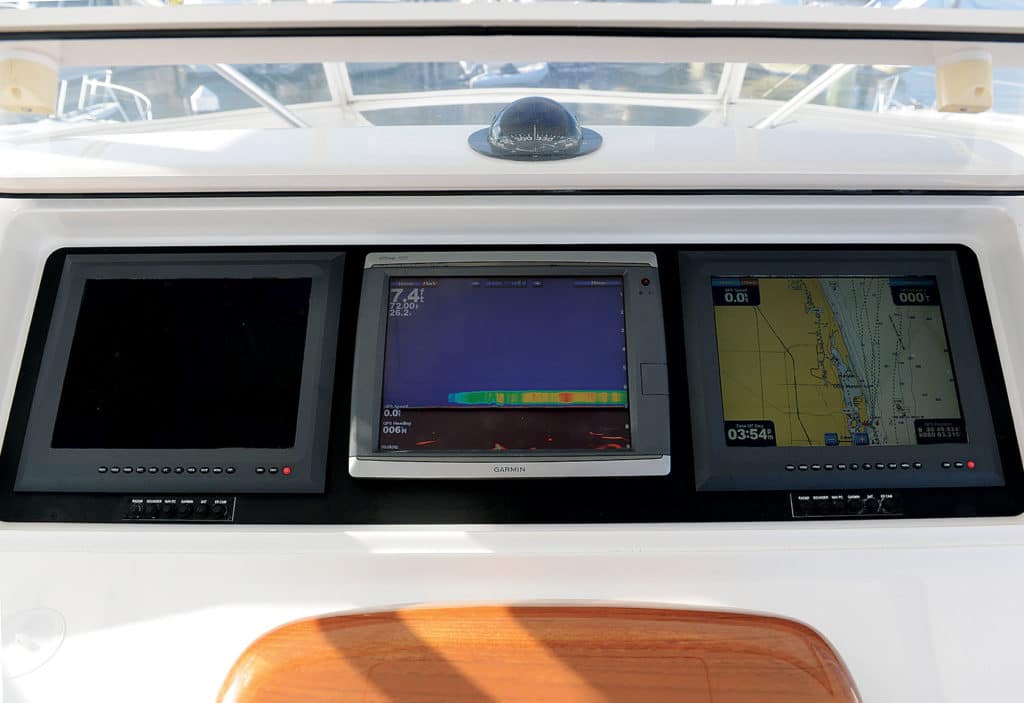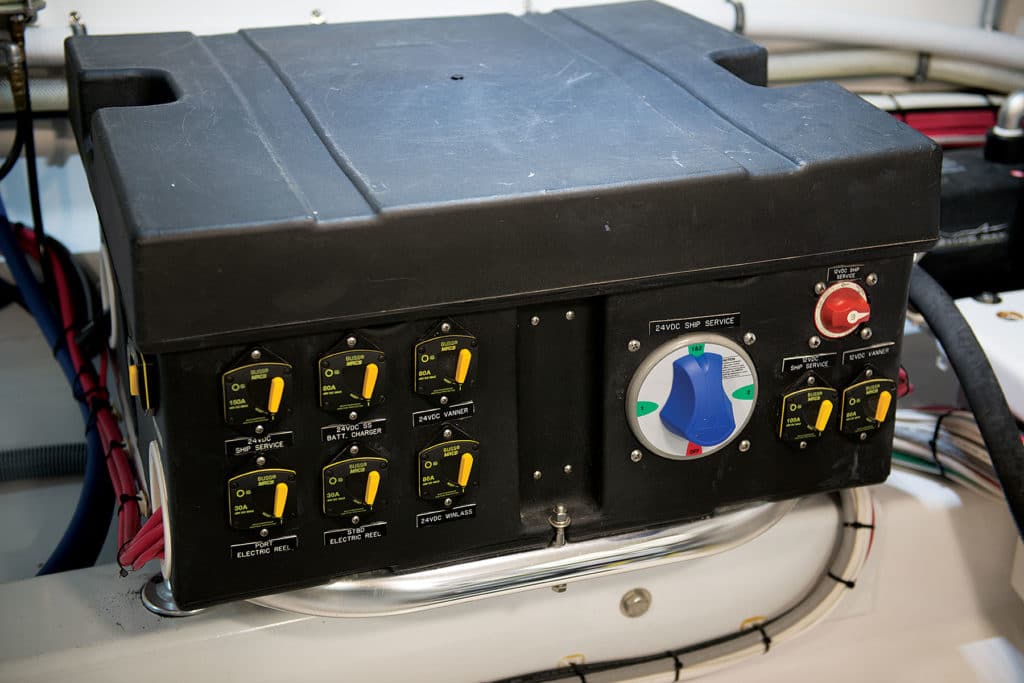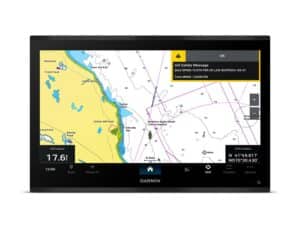
You’re 100 miles from shore, fishing on the edge of a deep drop-off. The bait is everywhere down below the surface, and your navigation display dims, flickers, and the picture rolls up like a spring-loaded window shade. You smack your forehead when you recall it flickered a couple of times over the past few weeks. This time it doesn’t come back. Somebody’s got a handheld GPS for navigation on board, but with no “eyes” in the water, the odds for success offshore just got a little worse.
Marine electronics are the most voltage-sensitive devices aboard your battlewagon and they are also the most powerful link between you and your quarry. Ignoring telltale signs of problems is a mistake that can be easily avoided so you don’t end up in the dark. And while it might not be unusual to reboot a PC once or twice a week to fix a problem, if you have to reboot your multifunction display just once, you better be quickly looking for issues beyond the on/off button, or your tournament endeavors will be fruitless.
If you do have to call technical support, the first thing the staff will ask is: “Are you operating on the latest firmware version?”
Technical Service
Consider the 1-800 number for technical support to be your 911; most captains keep it programmed into their satellite or cellphones. I’ve called the tech services for two brands of MFD makers several times and found they answered quickly and got right to the problem with great efficiency. When you call them, make sure you have the serial numbers of your devices in hand. Simrad provides extra serial-number barcode stickers with its devices to stick on the front of your device or in a safe place for easy access. This helps the tech quickly track the devices in the system to look for glitches. The help line for each manufacturer will keep a record of the call and have it for reference if additional service is required.
Speed Dial
Danny Hearn skippers the tournament-winning boat Blank Check and says his best tip for keeping electronics up and running for the entire season is “keeping Joe Diffenbach on speed dial,” indicating Hearn is not a DIY guy regarding problem-solving electronics. Diffenbach owns Custom Marine, a custom electronics installer based in the Jupiter, Florida, area, and he installed the systems on Blank Check.

It’s Always About the Firmware
If you do have to call technical support, the first thing the staff will ask is: “Are you operating on the latest firmware version?” It’s easy to forget these units are ultrarugged computers, capturing and analyzing data from radar, sonar, side-scan, temperature gauges, propulsion systems, audio equipment and more. And, like computers and other devices, firmware glitches and improvements are available on an almost daily basis. Keeping up with the most recent version means eliminating faulty firmware glitches and oftentimes adding new functions to the system.
For instance, in our last issue we noted that NMEA has added new protocol for backbone systems to carry audio data to and from several new audio companies. As this firmware is developed, you may find updates to allow MFD integration of your stereo system. Companies like Raymarine, which upgraded its LightHouse user interface, continue to tap their powerful processors to add features as they are designed for new displays. Further, as new systems are added, new interactions between components can cause unforeseen glitches that manufacturers address in firmware updates.
If you’ve ever called a tech-support line for your smart TV or Wi-Fi-enabled DVD player, you know one of the first things they ask you to do is remove power and disconnect data cables.
Problems from firmware can often behave like shorts or voltage drops too. So, before you get the multimeter out or call your tech guy, check your firmware version against the most recent one available at your MFD company’s online support page. There may also be upgrades for autopilots directly, but those are often done via the MFD’s system.
Firmware upgrades are downloaded easily. But even better are recent systems that enable Wi-Fi polling for new firmware when a unit reaches a hotspot. Raymarine and Simrad both allow users to connect directly to their servers via a hotspot to download firmware updates.
Regardless of the system brand you have, there are three inviolable rules when updating firmware. First, back up all your waypoints and other data. Second, make certain your power source is reliable for the duration of the update time. Third, don’t touch a thing until the update is complete and the display returns to its normal interface.
Backbone Static
If you’ve ever called a tech-support line for your smart TV or Wi-Fi-enabled DVD player, you know one of the first things they ask you to do is remove power and disconnect data cables. Since the NMEA 2000 network came on line over 10 years ago, I’ve seen many glitches solved (in fact, I fixed one myself) just by disconnecting the backbone from the power source and the displays. Maybe the problem is a connection loosened by vibration over time, or maybe — as with a smart TV — it’s a buildup of static electricity in the lines. But whatever it is, this quick trick often works.
Also, be certain every connector on your N2K backbone is supported against a bulkhead. Leaving connectors hanging between two secured connectors is asking for problems, as the jarring of the everyday activity can cause them to work and wear against each other.
Voltage
If you’ve eliminated the possibility of a loose connection, static electricity or outdated firmware as the culprit and you’re still experiencing dimming screens or systems that either won’t turn on or shut down by themselves, it’s time to get out the multimeter. Skip the test light; it may inform you when there is no voltage, but the light won’t actually tell you how much voltage there is — and you need a full 12 or 24 volts.
Here are the most common electrical problems and how to spot them with a multimeter test:
Short Circuit
What it is: When a direct connection between the hot and ground sides of a circuit is made and it bypasses the load — in your case, the navigation system’s N2K backbone.
How to find it: Disconnect the circuit from its power source — remove the terminals at the panel — and disconnect the load — the MFD or other device — from the circuit. Turn all switches for that circuit to the “on” position and then place the leads of the multimeter (set to the ohmmeter function) across the positive and negative sides of the circuit. A reading of infinite ohms means the circuit is good and the device is bad; a reading of less than infinity means there is a problem in the wiring.

Ground Fault
What it is: When in doubt, check the ground. This seems to be the most likely culprit in voltage issues on boats. Poor, worn or chafed insulation on switches, devices or wiring can allow for a lower-resistance path to ground (usually to the bilge water) more than the ground wire of the circuit does.
How to find it:
Switch off all equipment individually. Leave the battery switch on.
Disconnect the positive battery cable and, with the multimeter set to the DC-volt setting, take a voltage reading between the battery terminal and the cable. If it reads 12 volts — or any voltage, really — you have a leak.
Turn the battery switch off.
Keep in mind that all the MFDs, GPS antennas and the autopilot controller are running off the powered N2K backbone. If you’ve eliminated voltage supply, ground issues and shorts as the culprit, the backbone itself could be the issue. On a boat over five years old, changing the backbone isn’t a bad idea. Autopilot pumps, radomes and often audio equipment will have their own direct power supplies, so you’ll want to trace their power lines to the source connections if the problems are with them.
Multimeters provide the last word in the flow of voltage, but many ground and short problems can be visually spotted just by tracing the wires from the backbone to the power source. Wires that even occasionally contact bilge water can contain salt water and corrode invisibly from within. That’s why many electronics troubleshooters just start the whole process by replacing grounds and voltage-supply wires.







